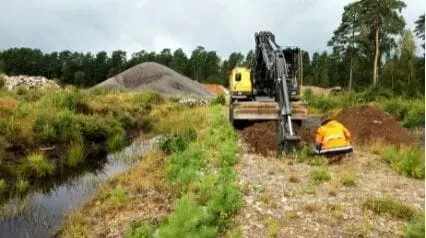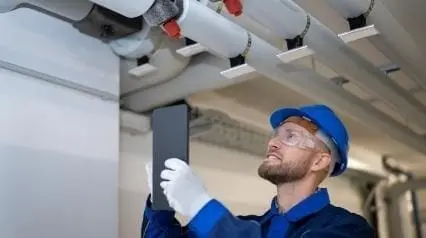What is Brownfield?
The Small Business Liability Relief and Brownfields Revitalization Act, the amendment to Comprehensive Environmental Response, Compensation, and Liability Act (CERCLA), describes a brownfield as “real property, the expansion, redevelopment or reuse of which may be complicated by the presence of a hazardous substance, pollutant, or contaminant.”
A brownfield is a piece of land or property that has been previously used for industrial or commercial purposes and is suspected to have been contaminated, such as soil contamination due to toxic waste. Put simply, a brownfield is a piece of land that has been contaminated with dangerous substances and may pose a risk to the people who will be using it in the future when it is not properly cleaned up.
Most of the brownfield sites are found in industrial areas of cities and towns. Examples include lands that are formerly used for commercial and industrial purposes, such as former gas stations, former dry cleaning establishments, metal plating facilities, abandoned factories, former factories, and landfills, among others.
Hazards in Brownfield Sites
Brownfield sites usually don’t contain high levels of contamination, though the types of hazards and their severity can differ depending on the commercial establishments that previously occupied the site. Contaminants may be present in the surface of the soil, buildings, or underground tanks. According to the Environmental Protection Agency (EPA) Brownfields Case Studies Summary Report, environmental contaminants often found at sites included the following:
|
Contaminant |
Substance Type |
Examples of Past Uses |
Potential Health Effects |
|
1. Lead (Pb) |
Metals |
Mining fuel, paint, inks, piping, batteries, ammunition |
Damage to brain, nerves, organs, and bone; cancer |
|
2. Petroleum |
Oil, hydrocarbon compounds |
Drill and refining, fuel, chemical and plastic production |
Headache; nervous system, immune, liver, kidney, and respiratory damage; cancer |
|
3. Asbestos |
Fibers in rock |
Mining and processing, piping, insulation, fire proofing, brakes |
Lung scarring, mesothelioma and lung cancer |
|
4. Polycyclic Aromatic Hydrocarbons (PAHs) |
Hydrocarbon compounds, combustion byproducts |
Coal tar, creosote, soot, fire, industry/ manufacturing byproduct |
Liver disorders; cancer |
|
5. Other metals (e.g., Cadmium, Chromium, Mercury) |
Metals |
Metal fabrication, plating, mining, industry/manufacturing |
Immune, cardiovascular, developmental, gastrointestinal, neurological, reproductive, respiratory and kidney damage; cancer |
|
6. Volatile Organic Compounds (VOCs) |
Man-made chemicals |
Industry and commercial product solvents, degreasers, paint strippers, dry cleaning |
Eye irritation; nausea; liver, kidney, and nervous system damage; birth defects; cancer |
|
7. Polychlorinated Biphenyls (PCBs) |
Man-made chemicals |
Heat and electrical transfer fluids, lubricants, paint and caulk, manufacturing, power plants |
Disruption or damage to the immune, hormone, and neurological system; liver and skin disease |
|
8. Arsenic (As) |
Metals |
Pesticides, agriculture, manufacturing, wood preservatives |
Nausea, vomiting, and stomach pain; blood disorders; nerve damage; skin disease; lung and skin cancer |
Insufficient Land for Housing in England
The need for new housing arises whenever the population grows. In the Conservative Party Manifesto 2019, key political parties pledged to increase housing in England—“continue to increase the number of homes being built.” The manifesto also announced a target of 300,000 homes per year to address the current crisis in housing supply.
The National House Building Council (NHBC) registered a total of 123,151 new homes in 2020, the largest decline in housing builds since 2019. This is due to the lockdowns caused by COVID-19. However, an estimated 183,450 new build houses were completed in June 2021, an increase of 26% compared to 2020. But it is evident that the numbers of the past two years still fall short of the 300,000 houses target. The Government of Ireland still aims to deliver 300,000 new homes, now with a target date—by the end of 2030.
Because of the need for more homes to be built, local plans are proposing to build housing in England’s countryside. This led The Campaign to Protect Rural England (CPRE) or The Countryside Charity to ask authorities for amendments to the National Planning Policy Framework (NPFF) published in 2012. One of the amendments they proposed was to “Prioritise brownfield sites for site planning and any public funding to bring forward new housing” before local plans eye the countryside of England. The CPRE stated that, “We don’t need to sacrifice the countryside when we have brownfield land in our towns and cities that could be regenerated to provide housing.”
Clean-up and Revitalization
The EPA has described a brownfield site as land “targeted for redevelopment.” It explained that brownfield does not necessarily mean “contaminated,” rather it is a site that needs to be cleaned up to be useful again after prior commercial or industrial use.
In 2014, together with the University of the West of England, CPRE found out through their research, From wasted spaces to living spaces, that there was enough brownfield land to cover at least 960,000 homes. The vastness of brownfield lands essentially calls for a major brownfield clean-up.
In the US, the cleanup initiatives that will be implemented at a brownfield site are determined by either the EPA, the state environmental agency, or both, or a “qualified individual” can also make the determination based on standards established in the state where the site is located.
There are also clean-up programs for brownfields, such as the EPA’s Land Revitalization Program. These programs are intended to empower collaboration among communities and authorities to safely assess and clean-up brownfield and repurpose the land. There are also brownfield grants and technical assistance given to communities to help fund the programs for clean-up and revitalization.
Cleaning Up Methods
The amount of clean-up required will vary depending on the chemicals identified at the brownfield site and how the site will be repurposed. The following are some of the common methods given by the EPA for cleaning up brownfields and other contaminated sites:
- Excavation—digging up contaminated soil on the surface or subsurface to be transported for treatment or for disposal in a landfill
- Tank removal—digging up soil that is contaminated by gasoline or other fuels to expose underground gasoline tanks and piping systems
- Capping—adding a hard layer of clean soil or sometimes geotextile at the top of the soil to serve as a barrier between the surface and the contaminants
- On site or ‘In-situ’ treatment—injecting chemicals in the soil to make the contaminants less hazardous
- Bioremediation—enriching soil with nutrients, oxygen, or compounds that release oxygen in order to stimulate microbial growth
- Phytoremediation—releasing chemicals to revegetate soil that is contaminated by heavy metals
- Lead and asbestos abatement—inspecting and removing lead and asbestos which is done by licensed contractors with specialized equipment
OSHA Standard on Brownfield
Health and safety regulations in the workplace, including brownfield sites, are governed by the Occupational Safety and Health Administration (OSHA) or an occupational safety and health agency designated by the state. Brownfield hazards are specified in the OSHA standards for general industry and construction.
Clean-up initiatives must comply with the Hazardous Waste Operations and Emergency Response (HAZWOPER) Standard covered under 1910 Subpart H: Hazardous Materials and in 1926 Subpart D 1926.65: Hazardous waste operations and emergency response to effectively protect workers from hazardous substances in the workplace.
Before a clean-up commences, site assessment tasks must be performed. These activities can range from:
- Reviewing historical information including photographs
- Collecting subsurface soil samples and evaluating them for contamination
- Conducting a job hazard analysis with employee and equipment information
- Determining the hazards associated with collecting soil samples
Create Your Own Site Assessment Checklist
Eliminate manual tasks and streamline your operations.
Get started for FREEBrownfield Redevelopment
Successful brownfield site redevelopment falls into these five categories given by the EPA:
|
Reuse Possibilities |
Examples |
|
Green Space |
Land for cultivation and agriculture, community parks, nature parks, wildlife habitat, trails, sports fields and facilities, open space for recreational activities |
|
Residential |
Multi-family homes (e.g., apartments and condominiums, single-family residences and other residential purposes) |
|
Commercial |
Municipal buildings, offices, retail stores, restaurants, and other businesses |
|
Industrial |
Manufacturing facilities, warehouses, distribution facilities, research centers, and development parks |
|
Mixed Use |
Multiple reuses such a residential building with shops and ground floor offices |
SafetyCulture for Site Assessment
Empower your site assessment, inspection, and hazard analysis with SafetyCulture (formerly iAuditor). Conduct your analysis safely and conveniently with this mobile app that turns your paper inspections and assessments into digital documents that you can easily share with the whole team of qualified individuals to assess brownfield lands.
Before beginning the clean-up for the site, SafetyCulture can help you with the following:
- Collect information about the workers and equipment accurately and quickly include it in a list of risks and hazards associated with their tasks by using risk assessment templates.
- Capture photographs of soil being inspected and create digitized reports that you can share across your team fast to inform them where the areas with contaminants are.
- Conduct Training using SafetyCulture to comply with HAZWOPER conveniently with mobile-first tools.
- Identify the applicable OSHA standards for the safety of workers after determining what hazards could possibly harm them with the Comprehensive OSHA Hazard Assessment Checklist.


